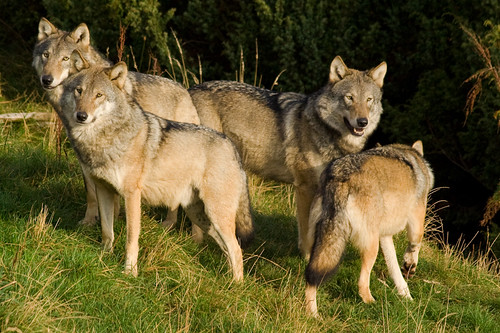Animal Behavior
Behavior - any action that can be observed and described.
Ethology - the scientific study of animal behavior
Kinesis = nondirectional movement in response to a stimulus
Taxis =
directional movement in response to a stimulus (toward or away)
-
Phototaxis: This is movement in response to light. For instance:
- Positive Phototaxis: Moths and other nocturnal insects are positively phototactic, flying towards light sources like a flame or a lamp.
- Negative Phototaxis: Many deep-sea organisms exhibit negative phototaxis, moving away from bright light towards darker areas to avoid predators.
- Chemotaxis: Movement in response to chemical stimuli:
- Bacteria: Some bacteria exhibit positive chemotaxis towards nutrients
- Ants: They use chemical trails (pheromones) for communication and navigation, following trails to locate food sources or return to their nests.
- Geotaxis/Gravitaxis: Movement in response to gravity:
- Earthworms: They display positive geotaxis, moving downwards into the soil in response to gravity.
- Certain aquatic organisms: Plankton display negative geotaxis, moving towards the surface where sunlight is available for photosynthesis.
- Thigmotaxis: Movement in response to touch or physical contact:
- Cockroaches: When encountering obstacles, cockroaches exhibit thigmotaxis, preferring to stay in contact with surfaces such as walls or other objects.
- Snails: Some species of snails exhibit negative thigmotaxis, retracting into their shells when touched or when encountering rough surfaces.
Nature vs. Nurture: Genetic Influences
Studies of animal behavior often focuses on what behaviors are genetically based and what is learned
Nature vs. Nurture debates compare the relative contributions of genetics (nature) and environment (nurture) in shaping an individual's traits, behaviors, and development.
Nature vs Nuture: Environmental Influences
Learning - change in behavior as a result of experience
Fixed Action Pattern (FAP) - specific behaviors performed in specific ways, they rarely change, though some can improve
Imprinting - form of learning, a response to only one kind of animal or object
Associative Learning - behavior that involves an association between two events
- Classical Conditioning (Pavlov's Dogs)
- Operant Conditioning (Skinner Box)
Other types of learning: insight, imitation, habituation, trial-and-error
Adaptive Mating Behavior
Sexual Selection - type of evolutionary selection that increases an animal's ability to mate and produce offspring
Sexual Dimorphism - males and females have distinctive appearances

Photo Credit: fanz via Compfight cc
Female Choice - females invest more in the offspring, tend to be choosier about their mates, this influences male behavior and evolution
Good Genes Hypothesis - females choose mates based on traits that improve chance of survival
Runaway Hypothesis - as a result of female choice, traits in males become exaggerated (peacock feathers)
Male competition - males will compete for access to females, leads to dominance heirarchies and territoriality
Sociobiology and Animal Behavior (studies social behavior in animals)
Altruism vs Self Interest - altruism has the potential to decrease lifetime reproductive success of an individual, but benefits the success of family members (army ants, honeybees, wolf packs) - kin selection & inclusive fitness
Reciprocal Altruism - offspring or close relatives help each other raise offspring

Photo Credit: Ben Clifford
Animal Communication
- Chemical (pheromones)
- Auditory
- Visual
- Tactile (touch)
